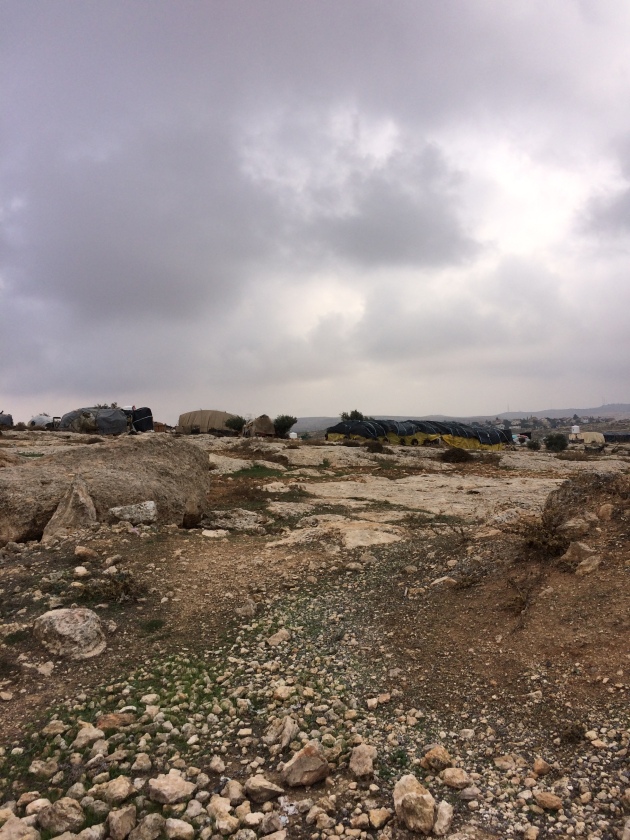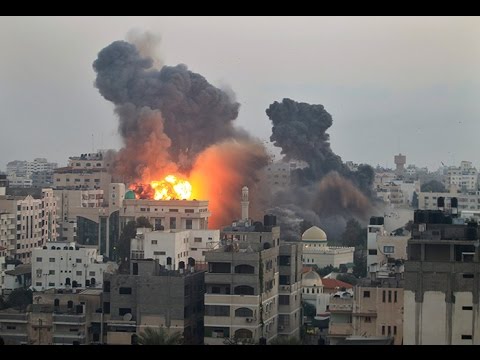Let’s have another Strategic Arms Limitation Treaty (SALT talks, anyone?)
December 21, 2015 Leave a comment

There’s bombs in them thar hills. Wildcat Hills, Western Nebraska.
The first seven months of my life were, I think, fairly idyllic. Oh, sure, there was a war going on all around the world, but when I was about 4 months old, Germany surrendered so the only war still being prosecuted was with Japan. We lived in Douglas, Wyoming, where there was no direct threat to my family and neighbors from the war.
And then with one horrendous act, the United States changed the world forever. August 7, 1945, when I was 7 months old, the United States dropped an atomic bomb on Hiroshima, Japan. The United States has not had a moment’s peace since that day.
That is obviously a ridiculous over-simplification of history. A ridiculous over-simplification, but not demonstrably untrue. I know the rhetorical truism that one “cannot prove a negative” (“the United States has not had”), so I will phrase my thesis another way. Since August 7, 1945, the people of the United States have lived in a more-or-less perpetual state of fear and discomfort.
I remember my father speaking of the travesty of Harry Truman’s firing of Gen. Douglas MacArthur. I remember my father’s sadness at the death of Sen. Robert A. Taft in 1953 because Taft did not believe in foreign entanglements as first Truman and then Eisenhower did and, according to my father, Taft should have been President. I remember the Suez Canal Crisis, Sputnik, Gary Powers, the fall of Fulgencio Batista, the Eisenhower Doctrine―all during those ‘50s we so often hear touted as an idyllic time of American stability and economic growth. And I remember the guided missile silos surrounding the area of Western Nebraska where we lived.
Throughout this time (and continuing vestigially to the present day), lurking in the background was the constant awareness of the “nuclear arms race.” Negotiations between the U.S. and the U.S.S.R. (whose “Godless communism,” was pronounced to be the cause of all of the fearsome brinkmanship leading perpetually almost to war) continued over decades, not to “rid” ourselves of the ever-present threat of bombing each other atomically into oblivion, but to “control” the threat.
When exactly did that threat end? Christmas Day, 1991, with the demise of the U.S.S.R?
Now we want to “rid” Iran of all possibility of making one of those atomic weapons that have kept us so frightened since 1945. Never mind that Israel has a bunch of them, or that India and Pakistan rattle the sabers of annihilation toward each other periodically. And China has as many of the dreaded bombs as we do. And does anyone know what happened to the U.S.S.R.’s bombs and missiles when it dissolved. ALL of them?
I am well aware that the possible carpeting of the earth (thank you, Ted Cruz) with nuclear weapons is no longer the greatest source of fear in the U.S. Now we have ISIS and the other “Radical Muslim Terrorists” waiting for the next opportunity to kill us. I am not being flippant, and I do not minimize that danger although I wish anyone who might be reading this would read this article by John Mueller and Mark G. Stewart.
We have made mortal enemies of vast numbers of citizens of the “Middle Eastern” as opposed to the “Western” world. For 70 (and in the case of Britain and France, 100) years we have run roughshod over not only its economies, but its very political structures, creating nations where there were none and destroying nations where there were. And all the while pumping billions (trillions?) of barrels of oil out of that part of the earth for the benefit of our part of the earth. All in the name of keeping the world safe for democracy.
None of this is unknown to the general populace. I know my writing about it is unscholarly, disjointed, incomplete (and probably so biased as to be laughable). And, yes, I know about Hitler and Stalin, and Emperor Hirohito and all of the other perpetrators of evil against the world.
But the fact is, we have brought much (most?) of our fear and suffering on ourselves. And the NSA, the police departments with armored vehicles, and the metal detectors and terrorism alerts and warrantless cyber-snooping, and . . . . are all reminiscent of the “air-raid drills” we practiced when I was in fourth grades. And about as effective, I’d guess.
We live in a fear-and-hatred-based society. But if we did not ourselves bring about our felt need to fear and hate, we at least have done and are doing nothing to alleviate the need.
And now, it will seem I’m changing subjects by pointing out one of the best examples of our Western penchant for xenophobia, of creating an untenable Sitz im Leben (“setting of life”), and then blaming the (perceived or real or conveniently created) enemy, the “godless Communists” or the “Radical Muslim Terrorists,” for the fear and loathing in which we live. That example is the State of Israel.
The U.S., the U.N., and the Zionists of Europe and the Middle East created a country by confiscating most of the land belonging to an indigenous people and made a new nation where it did not exist before. 1948. Since that time, and with increased persistence since 1967 when Israel took over all of the land of the area, the indigenous people have protested, usually legally and peacefully, but, at times, violently.
And just as the U.S. convinced its people―and most of the world―that the “other” was responsible for such realities as the Cold War, the Israeli government has convinced its own people and the U.S. that the indigenous Palestinians are to blame for violence and unrest. (Please see this site for current news of the situation.)
Our nation and nations like ours seem loathe to take responsibility for our mistakes, for our ruthlessness, for our self-centered grandiosity as the first step in fashioning not simply the control of arms and war and violence and hatred but the reality of peace and equality.

Palestinian Bedouins, live in these hills. The village of Sousia, Palestine Occupied Territories. Photo by Harold Knight, November 7, 2015.


